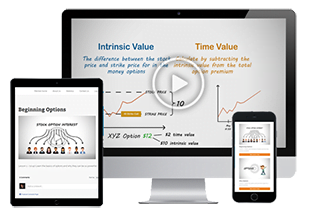The precarious future of corporate debt markets rests on the weak reed of the two largest derivatives markets. This derivatives dependence results from the shortcomings of post-Financial Crisis thinking about the needs of interest rate risk managers. When bank regulators nudged commercial banks out of the term debt markets on both the asset and liability sides of the banks’ balance sheets in the name of safer banks, we were left with an interest rate risk-vulnerable corporate debt market.
Bank regulators’ perception that term loans and deposits increase banking interest rate risk is no doubt accurate. But non-bank financial and non-financial firms are not in any way prepared to take on the risk management task for which banks were once designed.
How strange to force the banks to spend billions to hone their risk management skills, while simultaneously forcing these same banks to forgo the assumption of risk and the capture of risk management profits!
As a result, financial markets are ill-prepared for the Fed’s planned reintroduction of inflation into the financing equation. Economists and policymakers yearn, it seems, for a return to the Phillips Curve-based tradeoff between inflation and unemployment. The Phillips Curve underpins the Fed’s legislated mandate to balance the inflation-induced cost of improving the circumstances of the unemployed with the low unemployment-induced cost of excessive inflation.
But during the decades of low inflation following the turn of the 21st century, financial markets are no longer prepared to manage the risks created by higher, more volatile inflation.
History
The edifice of interest rate risk management reached its full flowering during the inflation-afflicted decades following the OPEC crisis – built on a foundation of bank term lending and deposit-taking. Yes, Eurodollar futures and LIBOR-based interest rate swaps are the risk management instruments with the greatest volume and liquidity, but they were built on a now-collapsed foundation – London wholesale term deposit rates. Indeed, both Eurodollar futures and LIBOR-based swaps continue their success, beyond the decades-past inflationary period that begot them. And without the support of the LIBOR market upon which they are based.
Why were London wholesale bank deposits so fundamental to the derivation of term credit-risky rate indexes over the past 50 years? Deposit markets themselves had become less important as a source of corporate financing as corporations have continuously decreased the share of their funds sourced indirectly through bank loans, accessing debt markets directly.
The reason to lean on deposits for market-wide interest rate indexes instead of the higher total volume corporate direct debt markets is that direct debt markets are far more splintered and complicated than deposit markets. What the corporations gained – reduced interest cost, bypassing the bank middleman – was partially lost through the less liquid, complicated, corporate individual issues compared to bank wholesale deposits.
Replacing bank wholesale deposit homogeneity with exchange-originated homogeneity
In retrospect, it might have been wiser for derivatives markets to create and manage their own settlement instruments. While it may be true that the higher stories of a building produce more revenue for the owner than does the building’s foundation, nonetheless, without a strong foundation a building cannot survive.
Had CME-supported three-month spot credit instruments been introduced as part of a CME Group interest rate risk management package, the CME would introduce a twofer – less risk for the futures exchange and less risk and more liquidity for financial market users of the spot instruments. Had the regulators seen homogenous term spot markets in that light, they might have formed different conclusions about the desirability of a liquid term spot market at every important maturity.
Unfortunately, however, today’s debt markets have been planned like old city centers, such as the City of London and Manhattan south of Fulton Street. Not planned at all, but instead, the result of paved-over trails designed for horse and foot traffic. Like the buildings of old Venice, circumstances have rendered the foundations of the debt markets insufficient to support the weight of the edifices above.
The existing spot markets are inadequate.
The bizarre result of the myopic development of financial instruments over the past 50 years is that derivatives markets are no longer derived from spot markets. Instead, spot market rates such as overnight repurchase agreement and commercial paper markets are being jury-rigged – manipulated, adjusted artificially, to imitate the missing term rates from which derivatives were built more closely.
Take the method by which overnight rates are being wedded to Eurodollar futures. Eurodollar futures are currently settled using the settlement day’s spot market rate once every three months, out of nothing other than habit and custom. The original point of using the three-month rate was to equate the three-month forecast embodied in futures rates to the three-month forecast embodied in the cash rates, on settlement day, when these rates are forecast over an identical period.
The two most important properties of LIBOR are:
- That it forecasts coming rates
- That it forecasts the credit risk premium associated with banks over the coming three months
How is an overnight repo rate like the Securitized Overnight Financing Rate (SOFR) replacing these two important properties? To retain the same adjustment of three-month futures to a three-month cash market, it has become necessary to artificially construct a three-month rate from the only available rates in post-inflationary financial markets – overnight rates. Furthermore, all proposed LIBOR replacements include an adjustment for the credit risk banks face.
Confusion of construction with function. The adjustment to obtain a three-month rate.
Perhaps the most telling failure of the proposed LIBOR replacements is to replace the three-month LIBOR rate with a backward-looking three-month rate, formed by using overnight rates from past periods. The knee-jerk reaction to replacing the LIBOR rate in settling derivatives trades and loans is to replace it with a three-month rate constructed from overnight rates. But that is why we do not think with our knees.
The historical function of a term deposit rate, for example, is to forecast the market’s expectation of overnight deposit rates for the coming quarter. Originally, that was exactly what the LIBOR rate did. Even today, that is the intention. The well-known problem is that the LIBOR market has dried up, forcing LIBOR providers to guess. That bank regulators are largely responsible for squeezing term deposits off bank balance sheets has no place in discussions of LIBOR’s demise.
But consider what happens when past overnight rates are used to produce the in-arrears three-month rate that settles the CME’s SOFR futures.
- Beginning with today’s overnight rate, which includes all the information available about future interest rates, the spot overnight rate is compounded with yesterday’s rate – a rate that has not yet learned everything you know about future interest rates today.
- Then, the combined two-day index is combined with the rate from the previous day – even less informative.
- Finally, the 89-day one-day rates are combined with a rate that is innocent of everything about the future that the market has learned for the past three months.
But this rate from the distant past is also trying to forecast the wrong thing! It is forecasting the overnight rates from the past three months. Of course, we know those rates for certain. No forecast needed.
The credit risk adjustment
Importantly, the credit risk premium is very volatile. The market’s opinion that one among the 18 banks included in the LIBOR sample might fail is guesswork – and hence subject to frequent change.
In adjusting for credit risk associated with a term rate index like the three-month rate, the current plan, as described by the Alternative Reference Rates Committee (ARRC) and the International Swaps and Derivatives Association (ISDA), is to use a long-term (as long as five years) average of past credit risk adjustments.
Never has practice strayed so far from financial market theory. The reality of a volatile risk, theoretically that of the single riskiest bank at the time of LIBOR calculation, is being replaced by a credit spread so stable, it is almost brain-dead. And the spread will be calculated using actual spreads over the past five years.
Long-term objectives vs. short-term needs
No doubt there was a fire to fight with the sudden disappearance of LIBOR. And perhaps regulators are justified by turning to the only available liquid credit market – repurchase agreements. But over the longer term, markets will ultimately address the real problem credit markets face – the absence of homogeneous spot markets for the corporate debt at every important maturity.
The integration of spot and futures markets are an important step in achieving this goal.
Disclosure: I/we have no positions in any stocks mentioned, and no plans to initiate any positions within the next 72 hours. I wrote this article myself, and it expresses my own opinions. I am not receiving compensation for it. I have no business relationship with any company whose stock is mentioned in this article.





